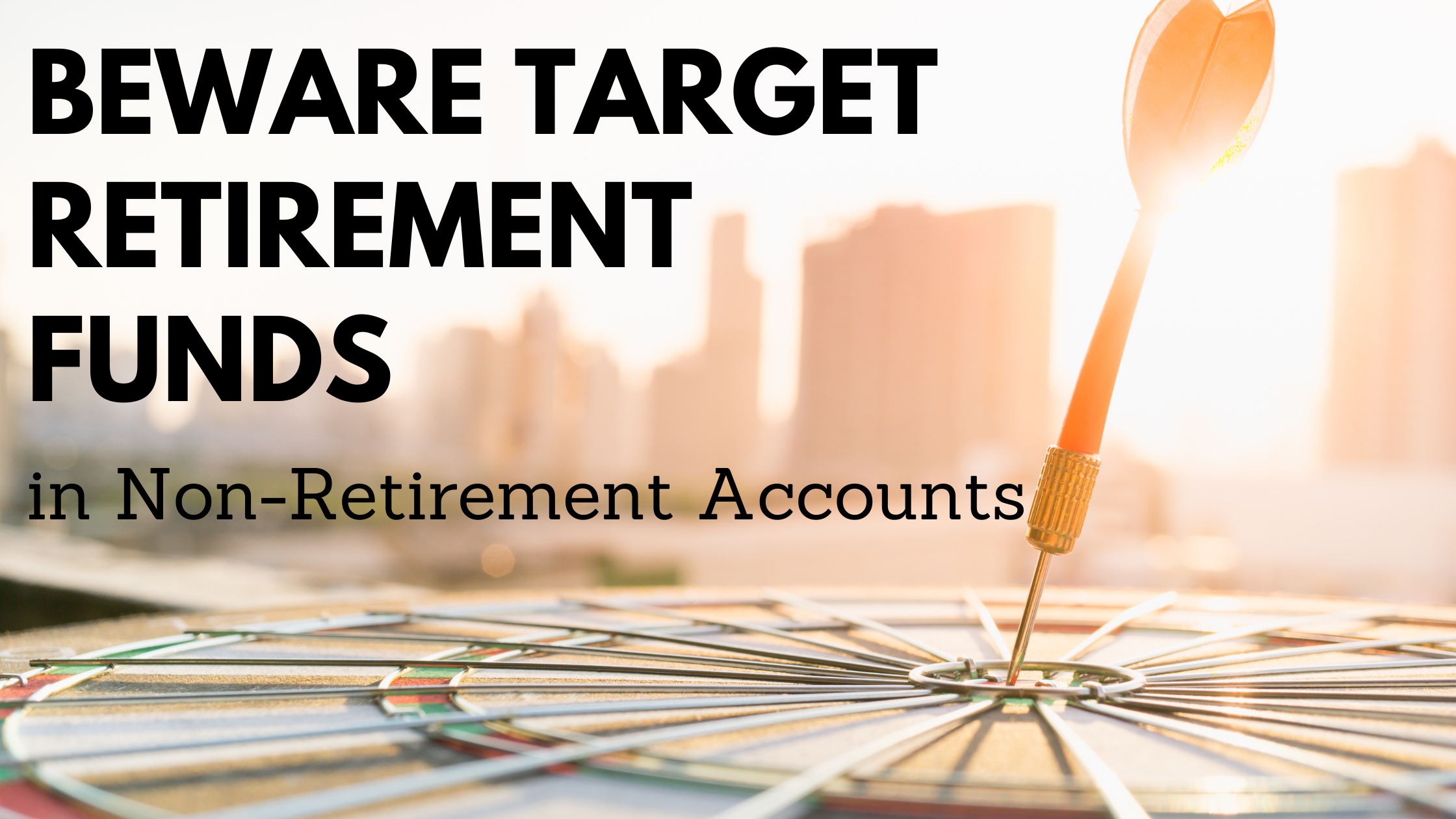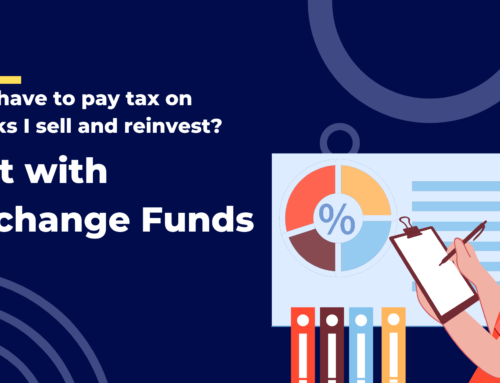Over the last couple decades target retirement funds have emerged as the go-to investment solution for individual investors in 401(k) plans and other retirement accounts. As most readers will be familiar, these funds generally have a year in their name that is supposed to correspond to the cohort of investors who be retiring around that time; as the target year approaches, these funds invest in a diversified portfolio of assets that is more aggressive (more stocks/less bonds) when the intended investors are young and early in their careers, and gradually shifts to more conservative (less stocks/more bonds) as the investors approach their target retirement date. These funds are now nearly universally available inside 401(k) plans, and among them no provider has been more popular than Vanguard.

Growth of target date funds in retirement plans. Source
Target date funds are now the dominant investment choice among retirement plan investors, and Vanguard’s series is far and away the most successful of these. Taking a simple but cost-effective approach to the idea, Vanguard’s target retirement funds invest in a handful of passive index funds that achieve broadly diversified exposure to global stock and bond markets. Their advantage comes in their extremely low cost; the funds are offered at an expense ratio of 0.15% or lower, giving a very inexpensive “all in one” investment solution that’s a reasonable choice for millions of retirement savers. Countless times clients have asked me to give them a recommendation for their 401(k) allocation and, upon seeing that they were already invested in the plan’s default choice of the Vanguard target retirement fund that corresponded with their age, I told them not to change anything.
But what makes for a good investment in a tax-sheltered retirement plan does not necessarily make for a good investment with taxable assets. And while I have happily recommended these funds inside 401(k) plans, I have often specifically cautioned investors away from buying such funds in their taxable brokerage accounts. Last year provided a highly relevant case study for making this distinction.
In 2021, as a result of some restructuring of how these funds are designed, the share classes held mostly by individuals outside of sponsored retirement plans (i.e., in taxable brokerage accounts) ended up making enormous capital gains distributions across the series. Jason Zweig over at the Wall Street Journal gives a run-down of what happened and the fury it has invoked among many of Vanguard’s loyal investors. The upshot is that these funds, bought and held mostly for their reputation as the lowest cost provider in the investment management business, will end up costing their investors a sizable fraction of their nest egg in tax costs for anybody unfortunate enough to have held them in a taxable account at year-end.
These distributions were pretty dramatic. Below I plot how much each fund distributed as a percentage of its NAV (Net Asset Value).
Investors in Vanguard’s 2035 fund VTTHX, for example, realized 20 cents of taxable income for every dollar they had invested in the fund, most of it long term capital gains. This despite that the yield on the underlying stock and bond investments from things like dividends and interest payments was only about 2.5%. To be clear, this is income that the fundholders will have to pay taxes on even if they didn’t sell any of their investment (although, some investors may find they’ll have to sell some of their investment merely to cover their tax bill, and as a result incurring more capital gains taxes).
This is all an unfortunate consequence of the tax and legal structure that traditional mutual funds are based upon. Conventional open-end mutual funds must distribute all net capital gains and dividends they realize over the course of the year to their investors. For low-turnover index funds, like the ones Vanguard runs, in most years this is usually a pretty modest figure and nothing to be overly concerned about. But sometimes special events particular to the fund company itself and having little to do with the underlying investments can result in unwanted and inequitable surprises.
One of the benefits of capital gains taxes is that normally investors are able to choose when they will realize them based on their sell decisions. But mutual funds may sometimes foist tax bills on their investors that they were not expecting and in many cases based on gains that they may not have even earned! One of most pernicious things about this setup is that such capital gains distributions are made to all investors equally, regardless of how long they held the fund.
These Vanguard funds built up a reservoir of capital gains over the course of a decade long bull market that were realized in a torrent in 2021, but many of Vanguard’s investors weren’t with them all that long. I know of one investor, for example, who recently retired and put a large fraction of his proceeds from stock option sales into one of the Vanguard retirement funds. He ended up realizing several years worth of capital gains for an investment he only held for several months! Based on the huge flows these funds have received in recent years, this is likely to have been the case for many investors.
This could have all been avoided if Vanguard and other asset managers discouraged investors from buying their target retirement products in taxable brokerage accounts and encouraged them to buy ETFs instead. ETFs (Exchange Traded Funds) have a different structure that allows them to usually avoid making capital gains distributions. Instead, investors pay any capital gains they’ve realized only once they’ve actually sold the ETF, just like with stocks. For this reason, ETFs are almost always preferable to hold in taxable accounts instead of mutual funds (there can be exceptions to this, and certain alternative asset classes don’t have good ETF options available, but is a good rule of thumb).
Despite this, for reasons that confound me, I am not aware of any target retirement ETFs currently available in the US market. Vanguard offers (extremely successful) target retirement mutual funds, and also offers (also extremely successful) ETFs for a variety of asset classes, but doesn’t offer target retirement ETFs. Ditto for BlackRock/iShares. Ditto for Fidelity. Ditto for many major asset managers.
Fortunately, it is straightforward to make a do-it-yourself target retirement fund using ETFs, especially for the Vanguard series, for which each of the underlying fund/investments has an ETF counterpart. Now, this might not be the best alternative to buying a target retirement mutual fund in a taxable account, for reasons I will get to shortly, but it is at least better. So let me provide the public service of letting investors who want to follow the Vanguard target retirement series in their taxable portfolios know how they can do it in a more tax intelligent manner. Vanguard’s target retirement funds invest in 4 or 5 underlying index funds, representing exposure to US stocks, international stocks, US bonds, international bonds, and (for the more conservative portfolios) short-term TIPS (inflation protected bonds). For each of these funds, Vanguard also offers an ETF that invests in an essentially identical portfolio. So by checking the allocation to the underlying investments in the target date fund, an investor can simply buy the ETF counterparts in the same proportion in their taxable account and thus basically replicate the target date fund in a more tax efficient manner. The table below summarizes these substitutions.
Perhaps once a year, an investor can rebalance the ETFs back to their corresponding weights in the target date fund, following the same gradual path down to a more conservative profile as retirement approaches. Of course, doing so may incur capital gains taxes, but the investor will realize those by holding the mutual fund anyway, most years by a similar amount, some years (like 2021) by a lot more! Implementing a target retirement date approach with ETFs will deliver very similar returns before taxes, and almost certainly much better after-tax returns.
Now, just because investors can run ETF versions of their favorite target retirement funds doesn’t mean that’s the best solution for them. The thing that is both feature and bug for these funds is that they are cookie cutter solutions; they provide a general purpose investment approach that varies only in the degree of risk as a function of age. This makes them easy to understand and use for individual investors, but they cannot be adapted to the complexities of an individual, and taxes are one of the most common sources of individual complexity. 401(k) accounts for smaller investors represent a relatively homogenous investment opportunity set, and so one-size-fits-all solutions can be good enough. But investors who hold a meaningful fraction of their net worth in taxable brokerage accounts typically have a higher overall level of wealth and associated financial planning complexity, are in higher tax brackets and so require highly tax efficient investment strategies, and often have financial objectives that are inconsistent with the gradually decreasing risk tolerance baked into target retirement funds.
For individuals with significant taxable wealth, it usually pays to give more careful consideration to the portfolio construction process than following the set-it-and-forget it approach of target retirement funds. Not including topics like active management and ESG/socially responsible investing, whose benefits depend more on an investor’s beliefs or assumptions, there are at least four ways most investors can achieve better outcomes compared to using target date retirement funds, especially when investing taxable wealth. Moving from least to most personalized, these include:
- Tax Loss Harvesting: this is the practice – now fairly familiar among the investing public – of purposefully selling investments that are trading at a loss and reinvesting the proceeds in some similar investment, thus maintaining the overall risk/return profile of the portfolio, but reducing the tax bill associated with it. Diligent tax loss harvesting on a portfolio can defer and in some cases permanently reduce the taxes associated with investing, enhancing the long-run after-tax return of the account. While it is technically possible to do tax loss harvesting with a target retirement fund (or any investment, really), doing so would be cumbersome and inefficient. In a diversified portfolio, at any given time usually some of underlying investments have been making money while others have been losing money. When tax loss harvesting, it behooves the investor to hold many securities representing different segments of the market so that she may sell the losers and hold onto the winners, so holding just one security in a retirement fund would allow her to only realize losses when the entire portfolio went down on average. Moving to the 4 or 5 ETF portfolio I discussed above would improve the opportunity set somewhat, but most advisors that employ tax loss harvesting will cut up the market into even more fine-grained pieces. Instead of owning just one US stock ETF, for example, it’s common to use several ETFs for that asset class, capturing variation along the large vs small or value vs growth dimensions. There are eventually diminishing returns here, so tax loss harvesting results are unlikely to be improved past say, a few dozen securities, but this will likely represent a substantial improvement over wrapping everything up into just one fund.
- Municipal vs Taxable Bonds: most target date retirement funds – including Vanguard’s – invest their bond portfolio only in taxable bonds and not at all in municipal bonds, which are generally exempt from US federal income taxation as well as from the state taxes of the state/municipality they’re issued by. This makes sense if we assume the funds are being held in a tax-sheltered retirement account such as a 401(k), but becomes much more problematic if we’re investing taxable money. A taxable investor may want to substitute municipal bonds for taxable ones in his taxable accounts. But doing a complete one for one swap isn’t necessarily optimal either. The municipal bond market is an entirely different asset class than the taxable bond market. Generally speaking, muni bonds in aggregate are riskier than the aggregate taxable bond market, and they have lower yields (to compensate for their tax-favored status). The degree to which an investor should favor municipal over taxable bonds will depend on his tax bracket, what state he resides in, risk tolerance, and whether he has any potentially complicating taxable items such as margin interest. It also may depend most crucially upon his mix of taxable vs tax-sheltered retirement accounts, which brings me to the third item…
- Asset Location: asset allocation is the familiar decision of how much to invest in different asset classes such as stocks and bonds. This is what target retirement funds are supposed to solve. Asset location is the decision of, given a particular asset allocation, where to place the assets across taxable and tax-sheltered accounts. This is a consideration that is often completely ignored by individual investors, and even unfortunately by many financial advisors. Often we find that the same asset allocation is just “copy-pasted” across the taxable and tax-sheltered accounts. This is unfortunate because there is considerable value to be added through asset location. The insight is that by locating tax-efficient assets (like stocks and muni bonds) more in taxable accounts, and tax-inefficient assets (like taxable bonds and real estate) in retirement accounts, the same risk/return profile can be achieved while achieving a much lower overall tax rate on gains and income. Part of the reason asset location isn’t more commonly practiced is that it is difficult because it is completely unique to the individual investor. The optimal mix of assets for an investor will depend not only on her risk tolerance and tax bracket, but also her mix between taxable, tax-deferred (traditional IRA or 401(k)), and tax-free (Roth IRA) retirement accounts. Vanguard can offer a dozen different funds for investors seeking to retire in the buckets of years like 2040 or 2050, but imagine for each of those targets trying to offer hundreds of variations to hold in different accounts for investors with a 70%/20%/10% taxable/IRA/Roth split, and another for a 20%/50%/30% split, and another for a 50%/50%/0% split, and so on. For taxable investors with substantial assets in both taxable and tax-sheltered accounts, the benefits of careful asset location strategies require going beyond the cookie cutter solutions of target retirement funds.
- Personalized Asset Allocation Glide Paths: Target date retirement funds provide a reasonable asset allocation solution to individuals following the conventional life plan of working for 30-40 years, retiring around age 65, and living for another 20-30 years off of portfolio income and Social Security. Even for this, they are reasonable, but not necessarily optimal, for reasons I will explore in future posts. But many investors, especially high net worth investors, often don’t fit into this mold. Often we meet investors who were very successful early in their career and want to retire much earlier than usual. Or they’re successful in their career and love it so much they never want to retire! Or they have enough assets to live off of for the rest of their life but they want to be able to leave behind a substantial bequest to their heirs and/or to charity. Or maybe they didn’t get started saving until later in life and now they need to catch up. In all of these cases and more the standard, off-the-shelf asset allocation solution isn’t necessarily appropriate. In some cases it will be too aggressive for the investor’s needs; in others it won’t be aggressive enough. Instead of relying on default investment settings, many investors would benefit from doing a more in-depth analysis of what their optimal asset allocation actually is. Using statistical methods like Monte Carlo analysis investors can evaluate which particular asset allocation pathway will maximize their chance of financial success.
Over the next several posts I will be exploring each of these topics in more detail, starting with the last one first. Using a newly developed framework, I will show how investors can move past the standard asset allocation advice to fully personalized lifecycle investment solutions. In the meantime, my condolences to any readers reeling from the taxman’s bite from Vanguard’s bungling.








